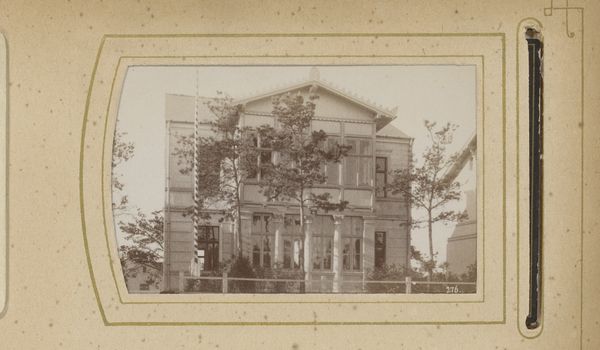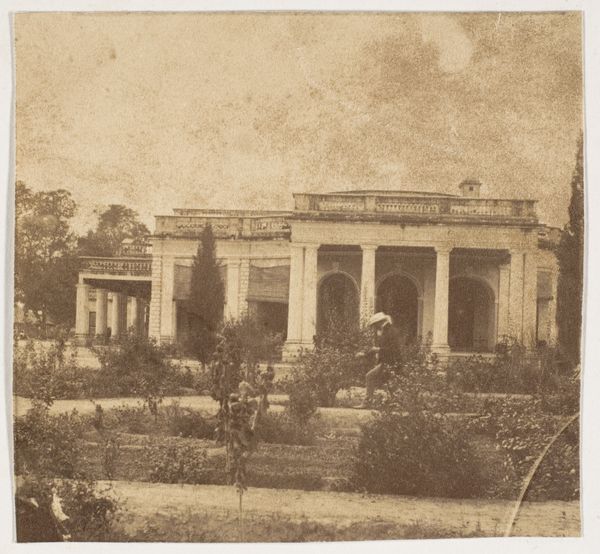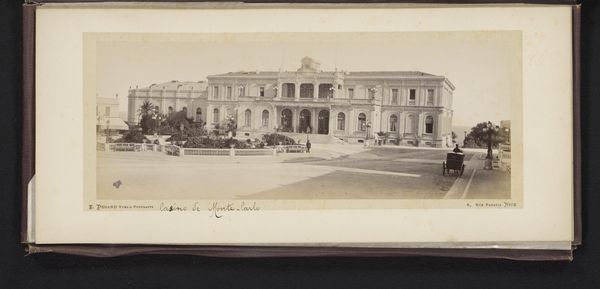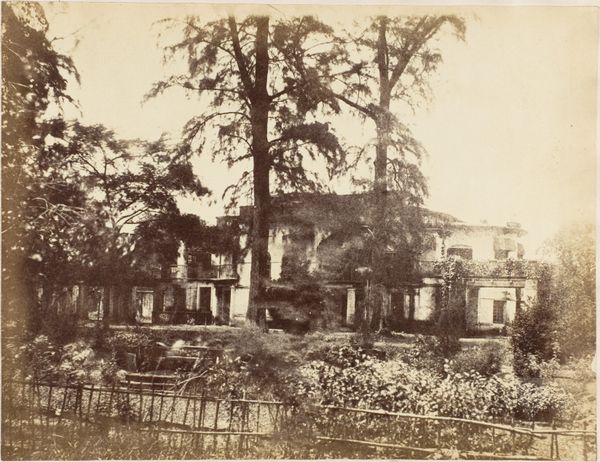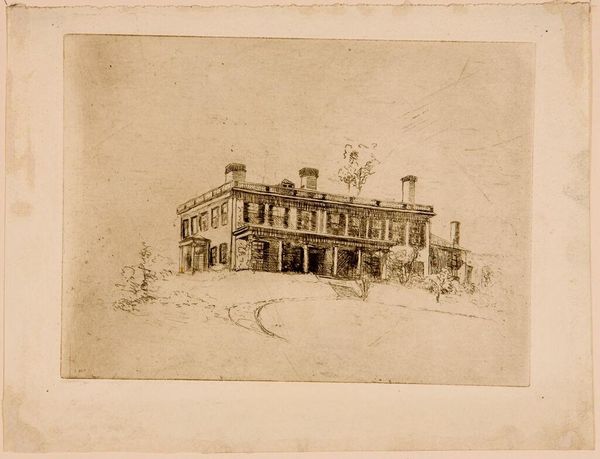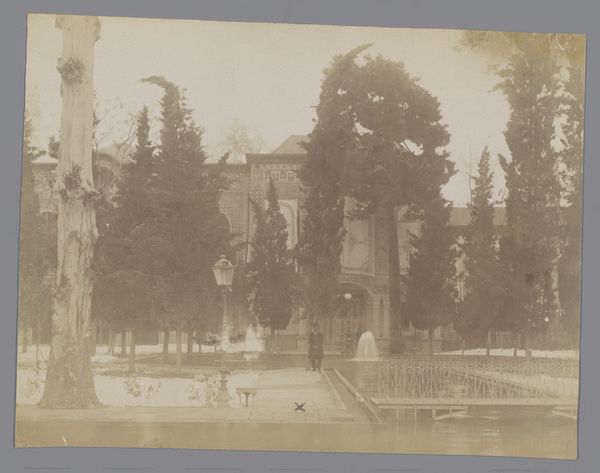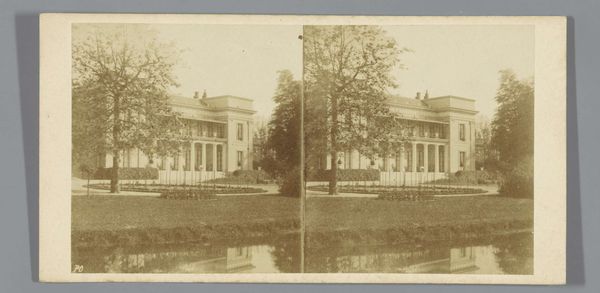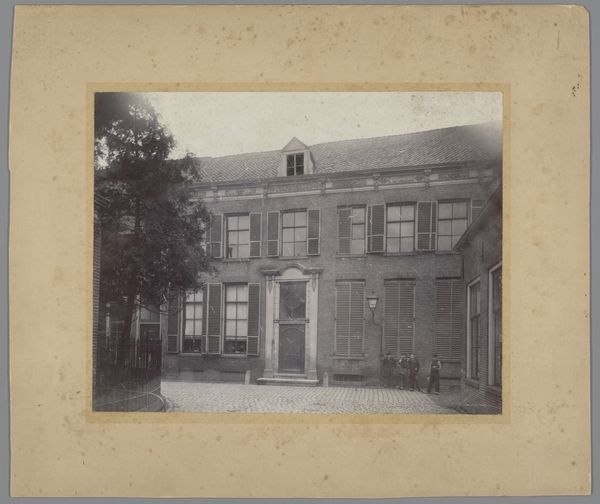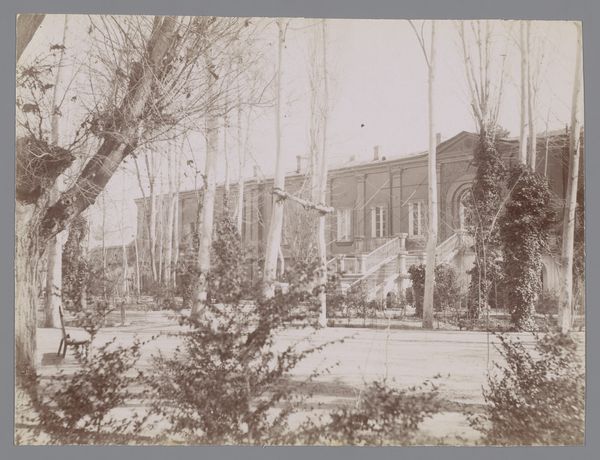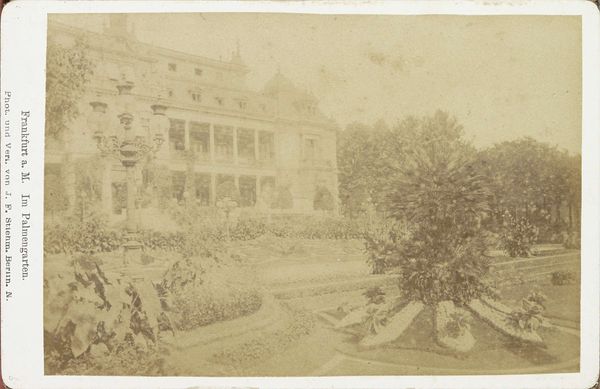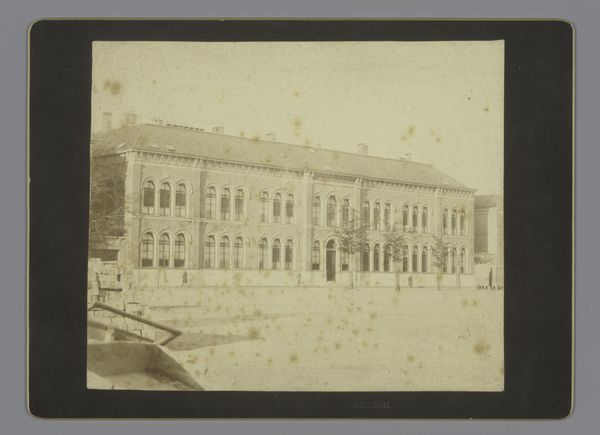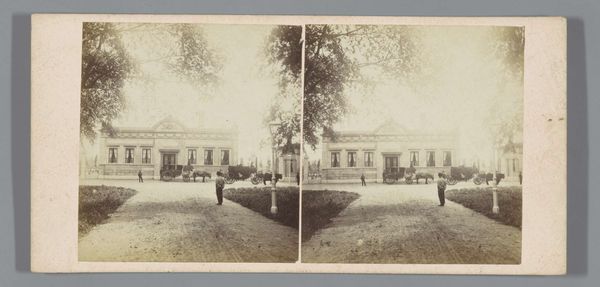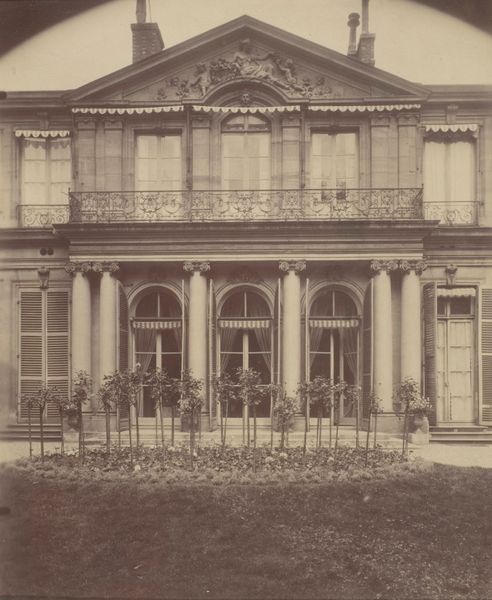
photography
#
landscape
#
classical-realism
#
photography
#
orientalism
#
building
Copyright: Public Domain
Curator: The piece before us, “British Legation, Teheran,” created by Luigi Pesce in 1858, is an albumen silver print now housed in the Metropolitan Museum of Art. Editor: It's a remarkably muted photograph, almost ghostly. The building appears classical, but veiled behind the soft focus and heavy shadows. A somber portrait. Curator: Indeed. The architecture evokes a kind of colonial imposition of order through its measured, rational design – those precise columns, the repetitive windows. Note, however, the way Pesce frames this rigid structure with the natural, organic overgrowth of trees and foliage. Editor: That natural framing feels like visual pushback. It suggests that while the British sought to plant their architectural and political symbols in foreign soil, the land itself resists, softly blurring and softening the image with its organic presence. Are those even British trees, I wonder? Or something utterly native? Curator: That’s where the symbolic resonance really deepens. The colonnade almost acts as a proscenium, staging the dynamic between colonizer and colonized, a visual encoding of power dynamics rendered with stark geometric forms. The subtle gradations of light and shadow give depth. Editor: Shadow here might mean repression, the obscured nature of intentions, but also time—the inevitable weathering of ideals. It feels incredibly pertinent even now; all the hubris of empire is held in balance with the steady persistence of history, and nature. Curator: Yes. The structure in itself conveys more than just power, but vulnerability: the photograph serves as a reminder of time, how quickly monuments or imperial dreams are taken by nature, and are susceptible to ruin and obsolescence. Editor: In seeing Luigi Pesce’s artwork, I wonder if a classical image can truly encapsulate an image so haunted. Curator: This early photograph prompts reflection on what we see, and even more, on what the past asks of us. Editor: Absolutely, a fascinating exploration of image and metaphor in our post-colonial era.
Comments
No comments
Be the first to comment and join the conversation on the ultimate creative platform.
